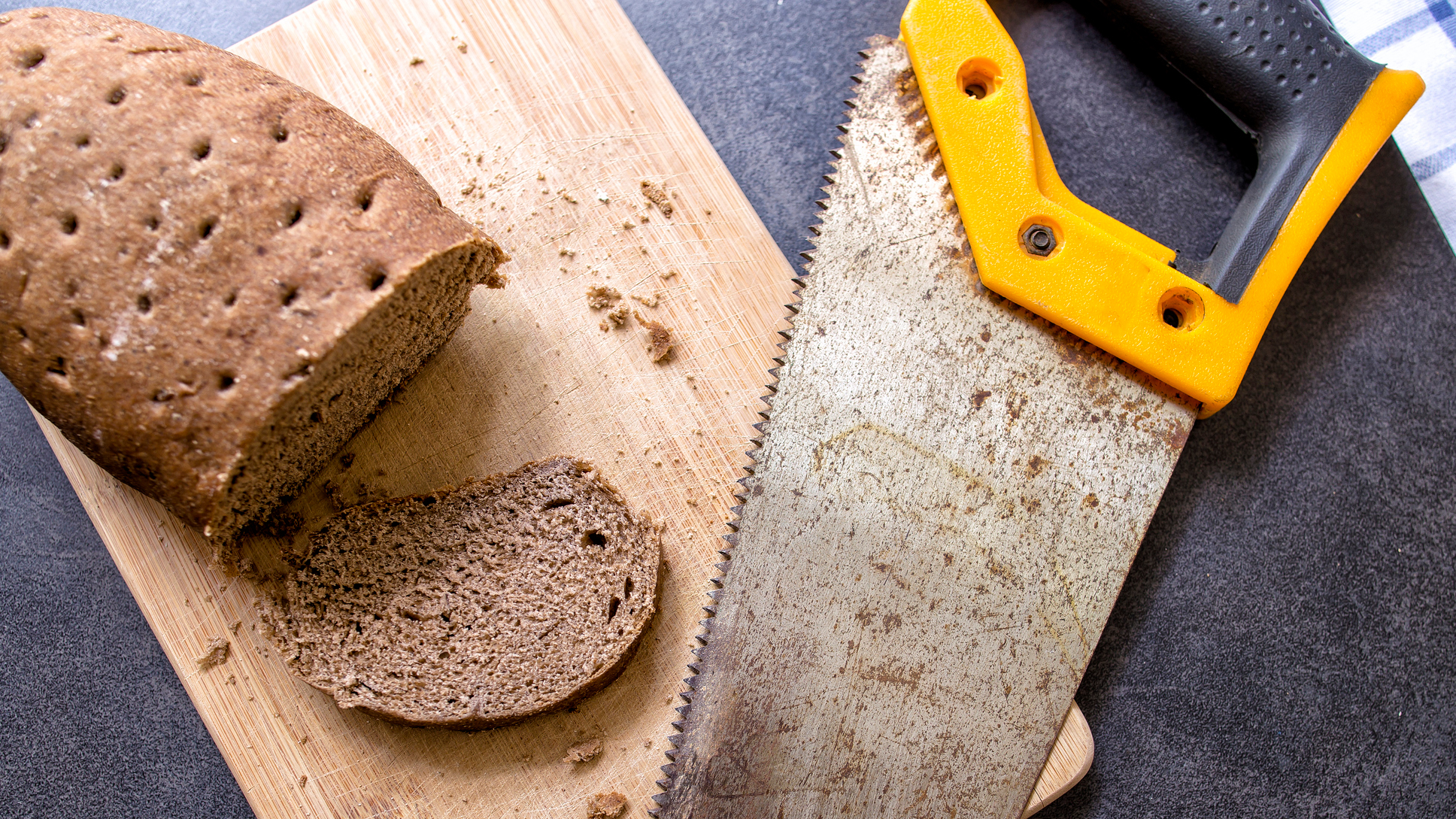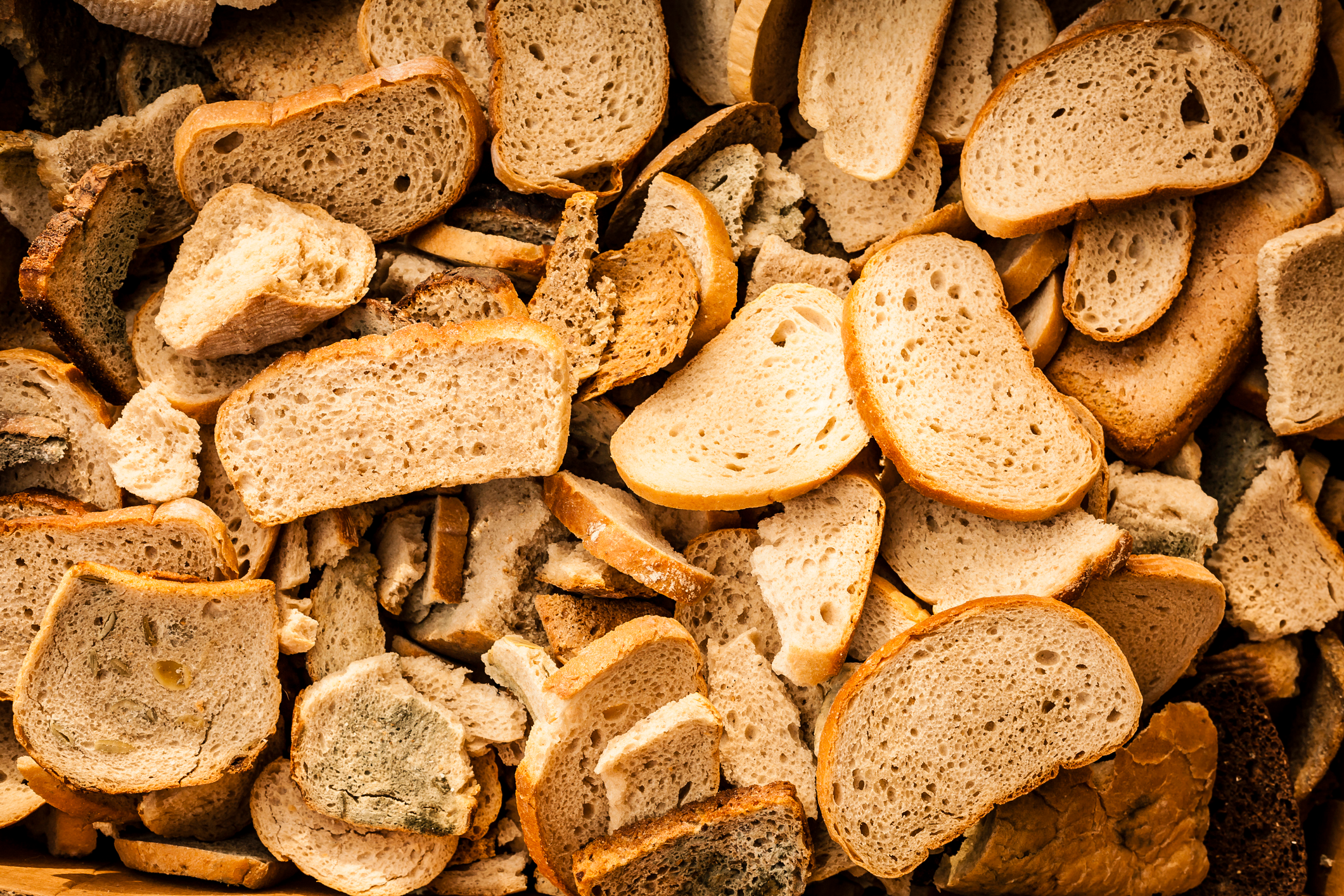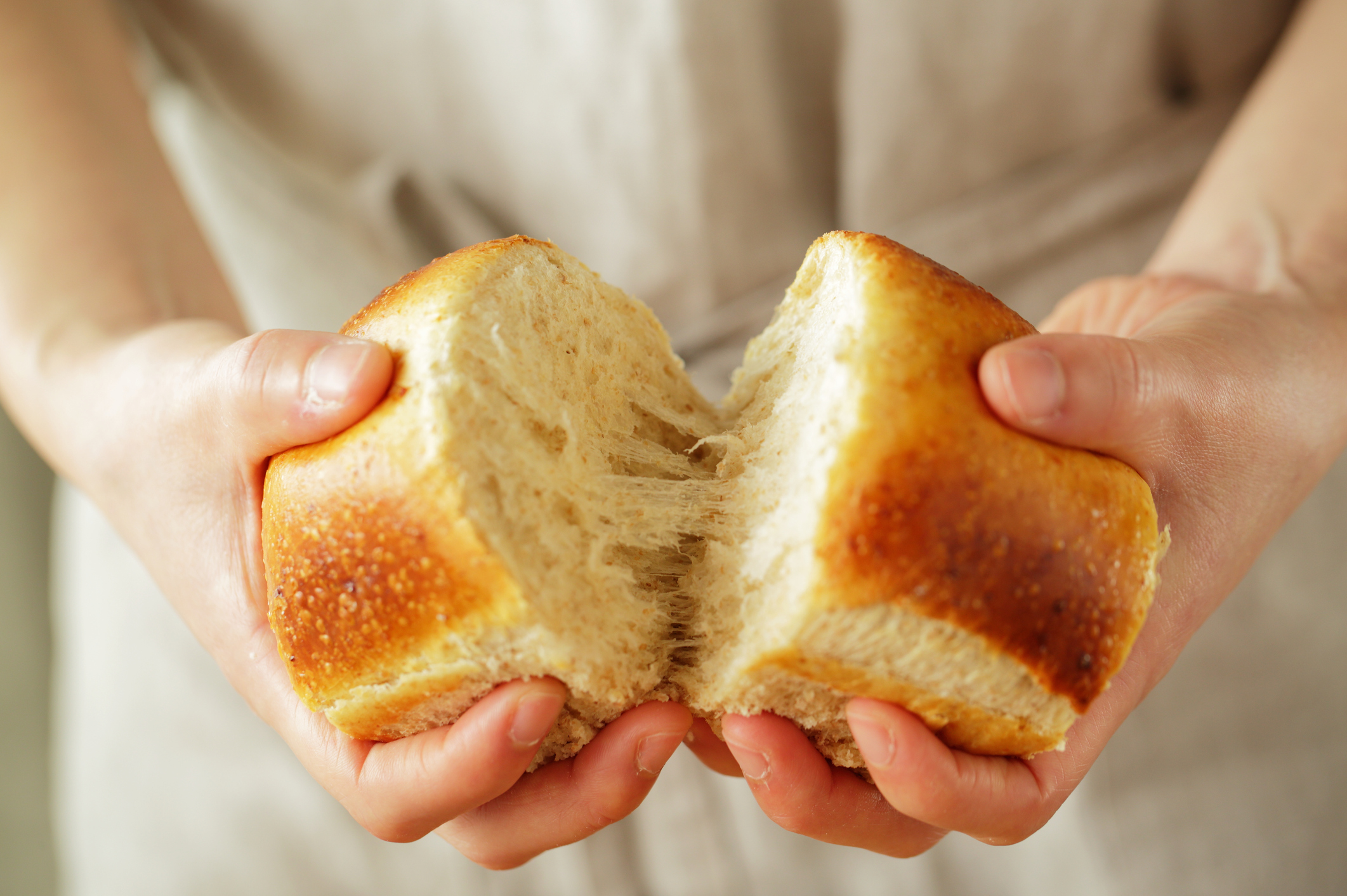How To Revive Stale Bread
A fresh-baked loaf of bread is one of life's great pleasures. The soft interior is open and airy, each bite yielding with just a touch of resistance. The exterior is all crust, a crisp and crackly delight contrasting in both texture and flavor. This balance is fleeting, though. Straight from the oven it's at its best, but with every minute that passes, that loaf moves one step further toward crouton, hard-tack, and hockey puck. Why must nature be so cruel? Why does all bread go stale?
It's tempting to believe that stale bread is simply dry bread and that efforts to keep it moist can stave off this sad fate. The real culprit, though, is a subtle chemical change that alters the food's structure on a molecular level. This process—called starch retrogradation—turns bread's texture leathery and gritty, and it makes the loaf taste dry (whether the moisture has really evaporated or not). Though this can't be stopped completely, it can sometimes be slowed or reversed. Let's look a little deeper.

The science
Starch molecules are nature's humble energy storehouses. Most plant seeds are loaded with the stuff, and once a seed germinates, the young sprout breaks these starches down into sugars to feed the growing plant. Humans, though, have learned that we too can use this starch to power ourselves. Grinding seeds into flour gives us quick access to the starch, and cooking it turns the molecules into more digestible forms.
At room temperature, starch forms clumps of solid crystals called granules. When we add warm water, they expand and the molecules—which have a long chain-like shape—unfurl and stretch out. If heated above about 185 degrees Fahrenheit—the gelatinization temperature—the starch crystals completely come apart and transform into a new structure known as a polymer gel. In this state, what was once nice and orderly (the crystal state) becomes a tangled mesh of crisscrossed tendrils (the gel state). This form makes the starch elastic and stretchy and creates pockets between molecules that trap moisture inside.
A ball of bread dough is of course made up of more than just starch, but if we imagine that this molecular network weaves its way through and around all the other ingredients, we can start to understand where bread's spongey, springy texture comes from. As it bakes, this form locks into place and the water trapped by the starch molecules is protected from evaporation.
Bread starts to stale, though, as soon as it cools. The starch slowly reverts from its yummy elastic state back to the powdery crystalline state... or, in chemistry-speak, it undergoes retrogradation. The water molecules are squeezed out one-by-one, and the bread toughens up.
Though this whole process might sound strange, there's another example of starch gelatinization and retrogradation that you are certainly familiar with: pasta! Open a box of spaghetti and you'll find stiff sticks that are chock-full of starch. After a few minutes in boiling water, though, they soften into al dente perfection when the starch absorbs the water and becomes elastic. And that one piece that always sticks to the pot when you drain the water? Look at the next day—after a night of retrogradation—and it becomes crunchy and coarse again.
How to slow staling
If retrogradation is the real enemy, is there anything we can we do to stop it?
If you buy your bread at the supermarket, your loaf likely already has some defenses built in. Most mass-market brands include enzymes or emulsifiers that are designed to interfere with the retrogradation process and slow down staling. Likewise, commercial recipes often include fats like butter, oil, or eggs that bind to water in ways that help the starch network stay soft longer. Some sandwich breads made this way can last a week or more on the counter before showing their age.
But what if you're baking your own bread or hitting up the local boulangerie? Without the above chemical chicanery, staling likely will set in after only a few days. You can try to slow the moisture loss by wrapping bread in a towel or plastic wrap, or by stuffing it in a dark breadbox, but these methods don't stop the chemical process of retrogradation. (And also, if bread is wrapped too tightly, moisture pushed out by the starch will build up. This leads to faster mold growth, dealing your loaf a double whammy.) Storing bread in the fridge is also a no-no. Cooling starch down to these temperatures actually accelerates the retrogradation process, and your bread will go stale faster.
The only sure-fire way to prevent staling once you get your loaf home is to freeze it. This locks the structure (and moisture) in place, and when thawed, your bread will bounce back to its tender best. (Don't forget to wrap your bread so it's air-tight before freezing, though. You don't want freezer burn.)
How to reverse (!) staling
Is stale bread unsalvageable? No! If you can get the starch molecules to re-absorb the water they've given up, the bread will come back to life.
For a loaf that has just started to turn, the moisture lost by the starch hasn't yet evaporated out of the bread. With a little heat, the starch will re-absorb the water, and transform back into the elastic gel state. Pop the loaf in the oven at 400 degrees Fahrenheit and let it warm for 5-10 minutes. When you start to smell that fresh-baked scent, dig in!
If the bread is more than a few days old, though, too much of the original water is gone. In order to provide some new moisture, run the loaf under a water faucet until the crust is good and wet—really!—while trying to keep the cut side dry (or at least not sopping). Now when you heat it in the oven, the water will evaporate into steam, permeate the bread, and perk-up the starch.
No matter what, though, don't let stale bread get you down. When resuscitation fails, there's always panzanella, croutons, and bread pudding.


